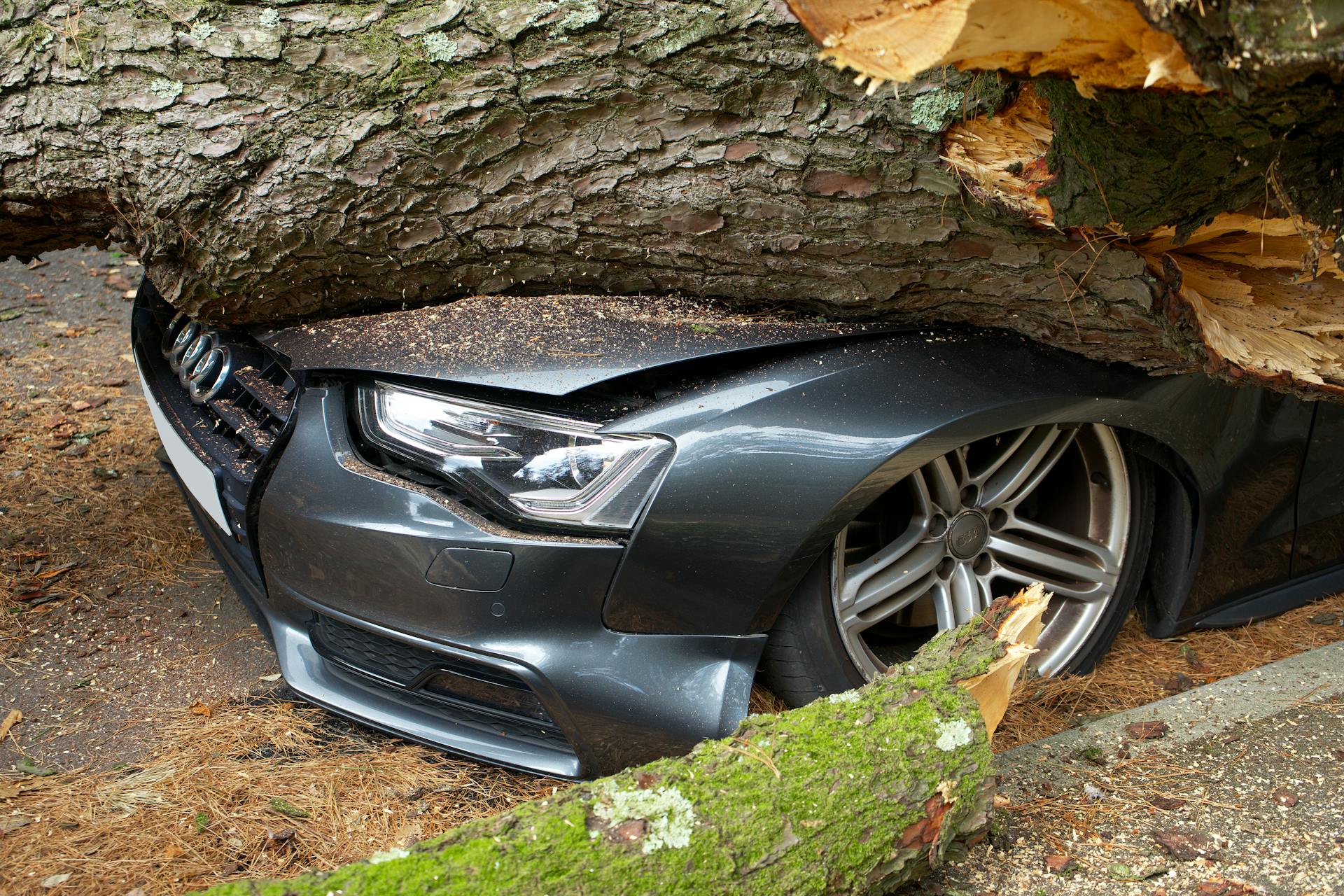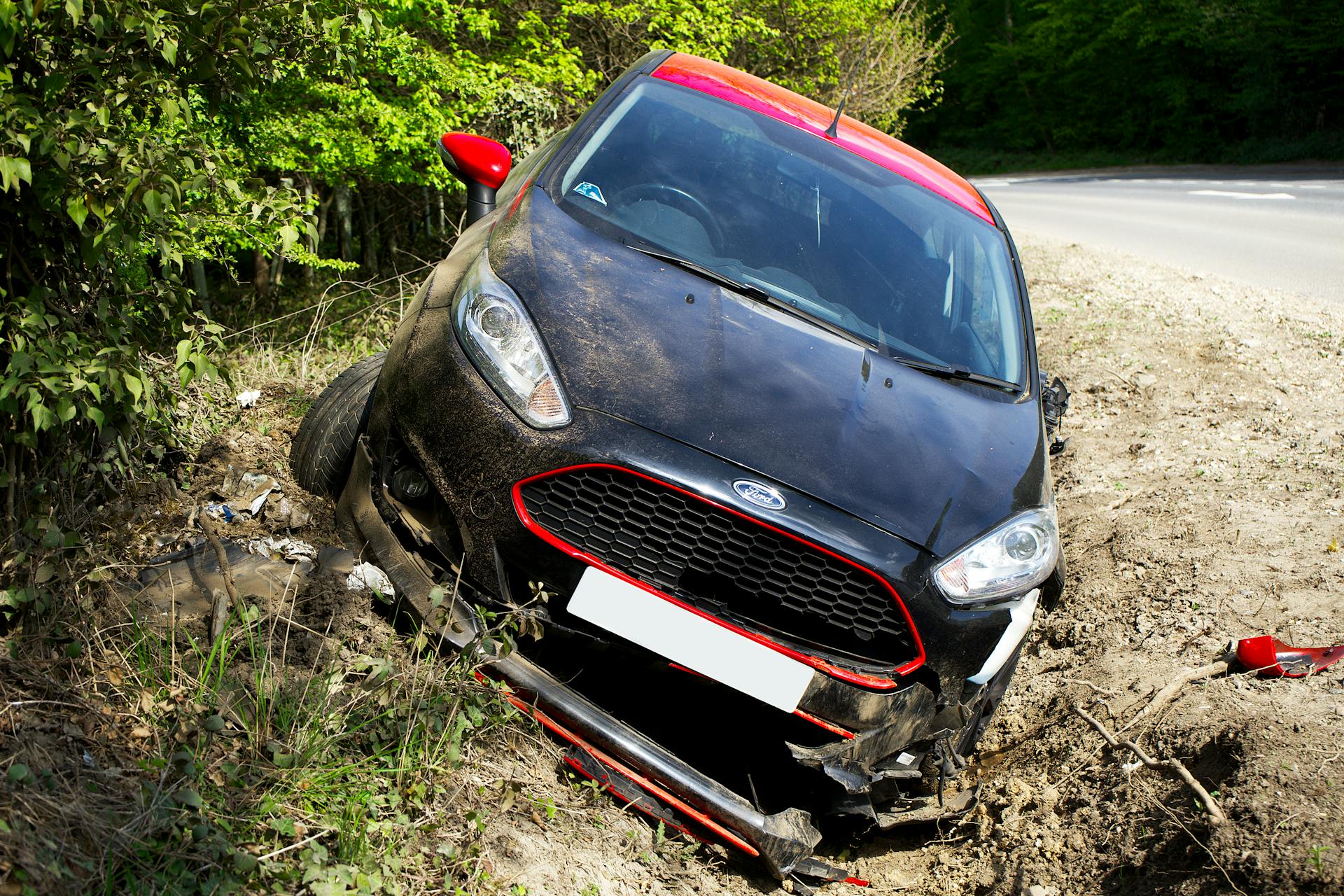
Basic insurance is designed to provide financial protection against unexpected events, and it typically covers damages to your property and liability for injuries to others.
Accidents can happen anywhere, and basic insurance helps ensure you're not left with a hefty bill. It usually covers damages to your home or car, as well as medical expenses if someone gets hurt.
For example, if you're involved in a car accident, basic insurance will help cover the costs of repairs or replacement of your vehicle, as well as any medical expenses for the other party involved.
Basic insurance also protects you from financial loss in the event of a lawsuit. This can be a huge relief, especially if you're not at fault.
You might like: What Does Basic Life Insurance Cover
Home Structure and Contents
Your home is a significant investment, and protecting it with the right insurance coverage is essential. A standard homeowner's policy typically covers the structure of your home, including repairs or rebuilding in the event of damage or destruction from disasters like fire, hurricane, hail, or lightning.
Make sure to check your policy carefully, as detached structures like garages, tool sheds, or gazebos may also be covered. However, a standard policy won't pay for damage caused by floods, earthquakes, or routine wear and tear.
To determine the right coverage for your home's structure, remember this simple guideline: Purchase enough coverage to rebuild your home. This will ensure you're adequately protected in case of a disaster.
Here's a breakdown of what's typically covered under a standard policy:
- Your home's physical structure
- Detached structures like garages, tool sheds, or gazebos (check your policy)
- Liability protection (more on that below)
- Coverage for additional living expenses (if you need to temporarily live elsewhere due to damage or destruction)
Your personal belongings inside the home are also covered, including items like furniture, clothes, and sports equipment. This coverage is usually 50 to 70 percent of the insurance you have on the structure of the house.
Liability and Financial Protection
Liability protection is a crucial aspect of insurance that provides financial security in case of lawsuits for bodily injury or property damage caused by you or your family members.
Having enough liability insurance is essential, as it can protect your assets, such as your home and savings, in case of a serious accident.
A fresh viewpoint: Professional Liability Insurance Pa
Bodily injury liability coverage applies to injuries caused by you, the designated driver, or policyholder, while property damage liability covers damage to someone else's property.
Here's a breakdown of the types of liability coverage:
Liability protection also provides no-fault medical coverage for someone injured in your home, but it does not pay medical bills for your own family or pets.
Liability Protection
Liability protection is a crucial aspect of insurance policies, providing financial safeguard against lawsuits and damages. It's a must-have for homeowners and drivers alike.
If you or a family member causes bodily injury or property damage to others, liability protection kicks in to cover the costs. This includes damages caused by your pets, so if your child or pet ruins someone's property, you're covered.
Liability protection pays for both the cost of defending you in court and any court awards, up to the limit stated in your policy documents. Be sure to check your policy to know the extent of your coverage.
Worth a look: What Does a Liability Insurance Cover
Liability protection also provides no-fault medical coverage for someone injured in your home, but it doesn't pay medical bills for your own family or pets. This is a key distinction to keep in mind.
Here are some key types of liability protection:
- Bodily injury liability: covers injuries caused by you or family members to others
- Property damage liability: covers damage to someone else's property, including cars, lamp posts, and buildings
- Personal liability: covers injuries to others caused by you or household members
Liability protection is essential to safeguard your assets, such as your home and savings, in case of a lawsuit. It's recommended to have more than the state-required minimum liability insurance to ensure you're adequately protected.
See what others are reading: Product Liability Insurance Definition
Is?
Insurance coverage is the amount of risk, liability, or potential loss that is protected by insurance.
Having insurance coverage is important because it can provide individuals with financial security and help mitigate losses.
The most common types of insurance coverages include life, health, auto, and homeowners.
Insurance coverage depends on the policyholder's age, place of residence, employment benefits, number of children, and other lifestyle factors.
Insurance premiums are paid by individuals to be covered for their losses, and the amount of coverage depends on these factors.
Additional reading: Is Comprehensive Insurance the Same as Full Coverage
Personal
Personal belongings are covered under your homeowners policy, including furniture, clothes, and sports equipment. This coverage is usually 50 to 70 percent of the insurance you have on the structure of the house.
You should conduct a home inventory to see if this coverage is enough for your needs. If not, you may need to purchase additional insurance to cover your belongings fully.
Expensive items like jewelry, furs, art, collectibles, and silverware are covered, but there are usually dollar limits if they are stolen. You may want to consider scheduling these items separately to avoid any coverage gaps.
Coverage for personal belongings includes items stored off-premises, which means you're covered anywhere in the world. However, some companies may limit the amount to 10 percent of the amount of insurance you have for your possessions.
You should carefully review your policy to understand the specific limits and exclusions for your personal belongings.
Discover more: Why Is Anucort-hc Not Covered by Insurance?
Auto Insurance
Auto insurance is a must-have for any car owner, and it's essential to understand what it covers. Bodily injury liability is a type of coverage that helps pay for medical costs if you're involved in an accident and injure another person.

Most states require a basic car policy to include six types of coverage: bodily injury liability, personal injury protection, property damage liability, collision, comprehensive, and uninsured/underinsured motorist coverage. These coverages are priced separately, so you can adjust the limits and pricing to fit your needs.
If you're involved in a car accident, your insurance will help cover the costs of repairing other vehicles or property that you damaged. This is known as property damage liability. In some cases, your insurance may also cover medical costs for the other people involved in the accident.
Here are the six types of coverage that make up a basic car policy:
- Bodily injury liability
- Medical payments or personal injury protection (PIP)
- Property damage liability
- Collision
- Comprehensive
- Uninsured and underinsured motorist coverage
Collision coverage helps pay for repairs to your own vehicle if you're involved in an accident, while comprehensive coverage protects you in case of loss, damage, or theft of your car.
A fresh viewpoint: Homeowners Insurance Provides What Two Basic Types of Coverage
Sources
- https://doi.sc.gov/963/Understanding-Basic-Homeowners-Insurance
- https://www.iii.org/article/what-covered-basic-auto-insurance-policy
- https://www.ncdoi.gov/consumers/homeowners-insurance/basic-homeowners-insurance
- https://www.investopedia.com/financial-edge/0212/4-types-of-insurance-everyone-needs.aspx
- https://corporatefinanceinstitute.com/resources/wealth-management/insurance-coverage/
Featured Images: pexels.com


